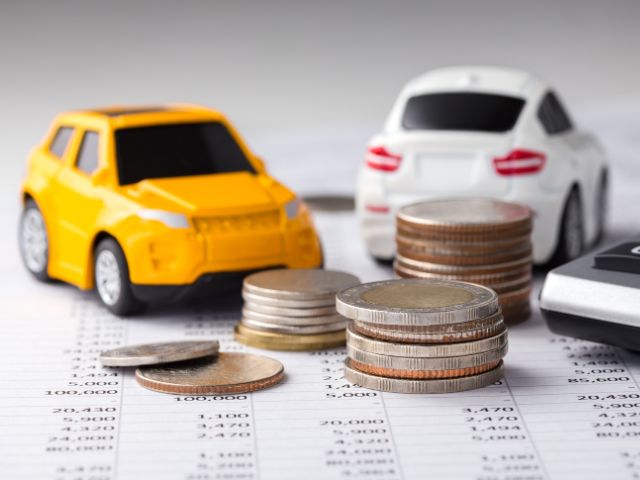Unlock Your Car’s Treasure: Trade-In Secrets for Tax Savings

According to Kelley Blue Book, the average price of a new car in the U.S. was $47,244 in February 2024, about one-tenth of 1% lower than January. Although the prices are decreasing steadily from the peak in December of 2022, cars are still a significant financial commitment for an American buyer.
In the United States, purchasing a new or used vehicle can be staggering, with expenses ranging from the sticker price to taxes, fees, and insurance. However, for those willing to navigate the complexities of the trade-in process, one can unlock significant savings – particularly when reducing sales tax obligations.
Trade-Ins: A Key to Reducing Your Financial Burden
Trade-ins offer a unique opportunity to offset a portion of the purchase price, potentially lowering the overall financial responsibility. In addition to the reduced cost of buying a car, it also affects your tax burden. Depending on whether your state allows for tax credits, you can reduce your sales tax expenses and begin your journey to financial victory.
How does a Trade-in Reduce Sales Tax? Explained with an Example.
Several states in the U.S. allow you to deduct the value of your trade-in from the final price of the new vehicle. So, if the new car price is $45,000 and your dealer is willing to give you $15,000 for trading in your old car, your tax liabilities will be based on $30,000. If your state levies a sales tax of 5 percent on new car purchases, you will pay $1500 instead of $2250.
Now, how much you pay will depend on the state you decide to make the purchase. For example, California’s vehicle taxes are levied on the new car’s full price before the dealer calculates trade-ins. To offset the extra burden of paying the tax and encouraging shoppers to sign the dotted line, many CA dealers offer credits from their pockets.
Another state that doesn’t consider the value of trade-in is Virginia. When you buy a new car from a dealer in VA, the state collects a 4.15% Sales and Use Tax (SUT). The amount is calculated on the vehicle’s gross sales price or $75 whichever is higher. The State of Virginia also requires you to pay SUT on a private party sale.
What are your Options when you possess an Old Car with Positive Equity?
Positive equity scenarios, where the trade-in value exceeds the remaining loan balance, can provide a valuable cushion against sales tax and other car related expenses.
If your car has positive equity, begin by finding out the actual cost of buying a new car after talking to the dealer about the trade-in value of your old car. Does your state levy a sales tax on the gross sales amount or the net price after deductions? Also, consider the old car’s price when you sell it privately instead of trading it at the dealer.
Do a thorough analysis after visiting several dealers in the area. Find out what price they are willing to pay for your car. Understand whether you will get more money for the vehicle when selling it privately.
When you are doing calculations, focus on the big picture. Instead of just emphasizing the sales tax savings, consider how much money your old car can earn you and how it will impact your overall expenditure.
If you live in a state where the sales tax is levied on the trade-in value and not on transactions between private individuals, consider opting for a private party sale.
Can you Trade-In a Car with Negative Equity?
In negative equity situations, where the loan balance exceeds the trade-in value, you require careful strategizing to minimize the tax impact. Often referred to as being “upside-down” or “underwater” on your loan, a negative equity can significantly impact your ability to negotiate a favorable deal and may result in a higher overall cost for your new car purchase.
While not an ideal scenario, many dealerships will allow you to roll over the negative equity into your new car loan. But, if you want to mitigate the impact of negative equity and potentially reduce your financial burden, you can make a down payment before trading in your vehicle. It will neutralize the negative equity amount and improve your bargaining position during negotiations.
Another strategy is to thoroughly research your vehicle’s market value and be prepared to negotiate aggressively with the dealership. Even a slight increase in the trade-in value can help offset a portion of the negative equity. You can also consider selling your car privately because it may yield a higher sale price than a trade-in, allowing you to pay off more of the outstanding loan balance before purchasing a new vehicle.
As always, improving your credit score can qualify you for lower interest rates, potentially counterbalancing the negative equity impact over the life of the loan.
Navigating negative equity can be challenging, but being proactive and exploring all available options can help minimize its impact on your overall car-buying experience. Consult with financial advisors and dealerships to develop a strategy that aligns with your specific circumstances and long-term financial goals.
Your Car is your Asset
Your car is more than just a mode of transportation; it’s a valuable asset that can be leveraged to your financial advantage, particularly when it comes to trade-ins and sales tax savings. By approaching the trade-in process strategically, you can effectively reduce your overall expenses and maximize the value of your vehicle.
When trading in your car, savvy consumers can exploit state-specific regulations and tax laws to potentially qualify for sales tax reductions or exemptions on their new purchase. By understanding the nuances of these laws and negotiating effectively, you can transform your old car into a powerful bargaining chip.
